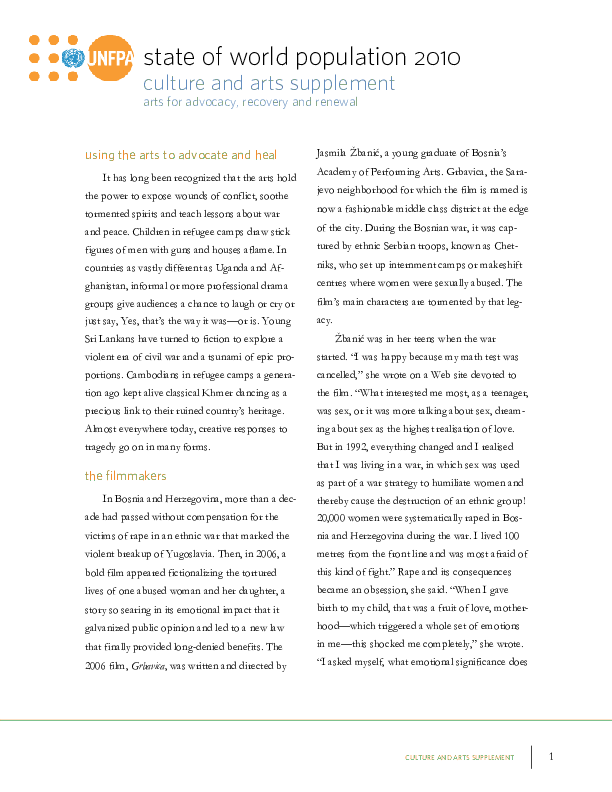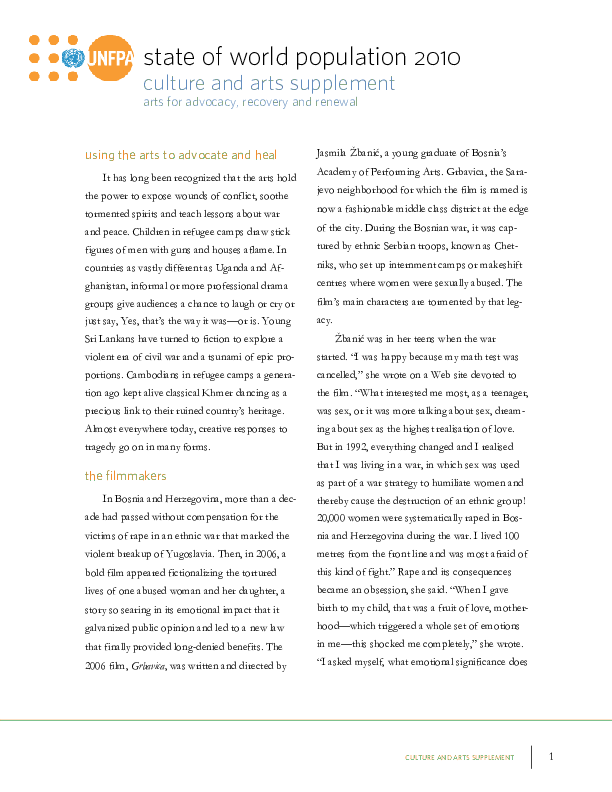It has long been recognized that the arts hold the power to expose wounds of conflict, soothe tormented spirits and teach lessons about war and peace. Children in refugee camps draw stick figures of men with guns and houses aflame. In countries as vastly different as Uganda and Af-ghanistan, informal or more professional drama groups give audiences a chance to laugh or cry or just say, Yes, that‟s the way it was—or is. Young Sri Lankans have turned to fiction to explore a violent era of civil war and a tsunami of epic pro-portions. Cambodians in refugee camps a genera-tion ago kept alive classical Khmer dancing as a precious link to their ruined country‟s heritage. Almost everywhere today, creative responses to tragedy go on in many forms.



